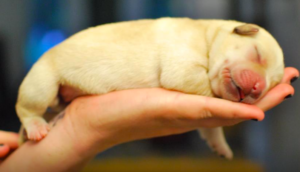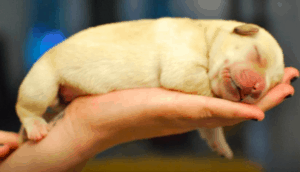
If I had a dollar for every time I heard a pet parent use the word “over-bred” I’d be a millionaire. Seriously–I hear it from pet owners, veterinarians, groomers, rescue parents, and from people who, generally, don’t understand what this really means—NOR WHAT THEY ARE IMPLYING WHEN THEY SAY IT.
Here’s some possible misconceptions about this phrase/word’s meaning:
*”It means that breeders interfered too much in the breeding of retriever dogs and, while they may have achieved some characteristics they wanted, they also caused some inherited problems (usually caused by breeding with dogs that are too closely related – as with humans, this isn’t a good idea in the long run)…”
*Or…”Overbreeding a dog means breeding a female or male dog: more than its body can safely handle (we’re considering the dog, here) too precipitately without waiting for former litters’ feedbacks (we’re considering the breed, here)…”
*Perhaps it may be thought, “Overbreeding a dog means breeding a female or male dog: more than its body can safely handle (we’re considering the dog, here) too precipitately without waiting for former litters’ feedbacks (we’re considering the breed, here)…”
So I’d love to address this on MANY different levels as its VERY important you use this phrase CORRECTLY or you will turn off an educated dog breeder, veterinarian, or even terribly offend the logical thinking of those who think critically about such things. I’ll take into account 35 experience of myself and other lifetime, professional breeders, but also the latest in scientific research.
Let me address the idea of ‘over-breeding’ and getting unwanted characteristics. This is a very REAL issue if the gene pool of a particular breed is VERY small (unlike the Labrador which is the largest gene pool of all AKC breeds). But many professional breeders will (and have) bred dogs with similar characteristics so they produce the correct TYPE put forth in the AKC Breed Standard for the Labrador retriever. But if they do this too closely (for instance, within the first 2-3 generations, without any experience in line breeding, you will get the best of the best, but also the worst of the worst. I find breeders greedy for only that big blue ribbon tend to fall into this category. Sometimes they are only breeding for themselves, or may still be in the process of developing a new breed up and coming in the AKC.
(Above my friend’s 93 year old mother helping us birth a litter!! She loved it! She cheered for everyone born and held each one.)
A breeder must also consider EACH INDIVIDUAL DOG when deciding when/how often to breed any particular dog–be it male or female. A caring breeder would never let a dog struggle each time she gives birth–maybe that dog has 1 litter at the most.
(I always get the question “how many times do you breed a female” and my answer is always, it depends on every single individual girl!!)
This is so true in my experience. I’ve seen most girls ready to ‘retire’ at about age 5-7. But I’ve retired some after their first litter–some after they show ANY signs, whatsoever, of it being any wear and tear on their body. And we surely never breed a dog not fully grown/developed herself as to not rob from her body to be able to use all her energy to grow strong and healthy! My Amy is a good example of the one extreme. She had pups with such BIG heads she really struggled to give birth. I spayed her. Couldn’t stand to see her suffer. On the OTHER end of the spectrum (back in the old days before we had wonderful reproductive consultants like dr. Hutchinson) who had litters until she was 10! (this was the ONLY girl I ever saw, “Lollipop” was her name, literally leave the pond, run to the house, pop out a litter, and run back to the pond!–VERY rare). Healthy, happy, amazing pups each time.
The other question I get is “I hear that if its not her first litter they aren’t as healthy” or “you’ll have birth defects if you breed your dog more than once.” Knowing that Dr. Van Hutchinson (DVM) calls a “pregnant uterus a healthy issue” we generally breed YOUNG, 2 off, 1 off–unless they need to be spayed early, or a girl just struggles, or has to have c-sections. This is another I can’t get my head around as I have two dear friends–one has 9 children, and one that has 11. They had them young. They are all healthy, happy and fully developed and super amazing. But as you can imagine, the risks of breeding a girl over 8-9 can be “possible” defects. But this is very rare in my experience. And some of my best show dogs came from the SECOND litter, not the first–because, of course, we like to do a test breeding before we keep pups out of a litter to keep our lines improving and moving forward. Here’s another great article to teach you about how breeders and top veterinarians decide on breeding matches–plan them–and how we breed responsibly.
Now here’s some of the funniest questions I’ve been asked over the years:
“Can a dog can pregnant from casual sex?” (REALLY!???).
“I hear if a female is bred once by a non-purebred all her next litters are not purebred (OK…not even touching that one…LOL) SMH…
Remember it also depends on the breed–a beagle comes into heat every 4-6 months whereas a Labrador comes into head about every 6-10 months. This also makes the amount of litters vary–and its probably easier to breed “over-breed” a smaller dog breed if you are just considering how many litters they can product, realistically, in a lifetime. This must be taken into consideration with each breeder of each particular breed. Especially the ones that can ONLY give birth by c-section!


